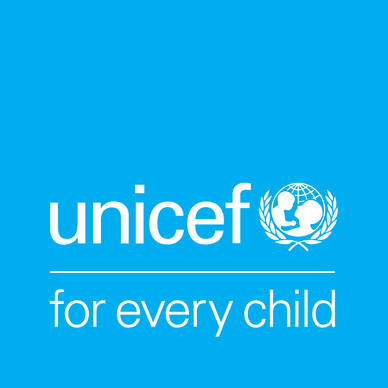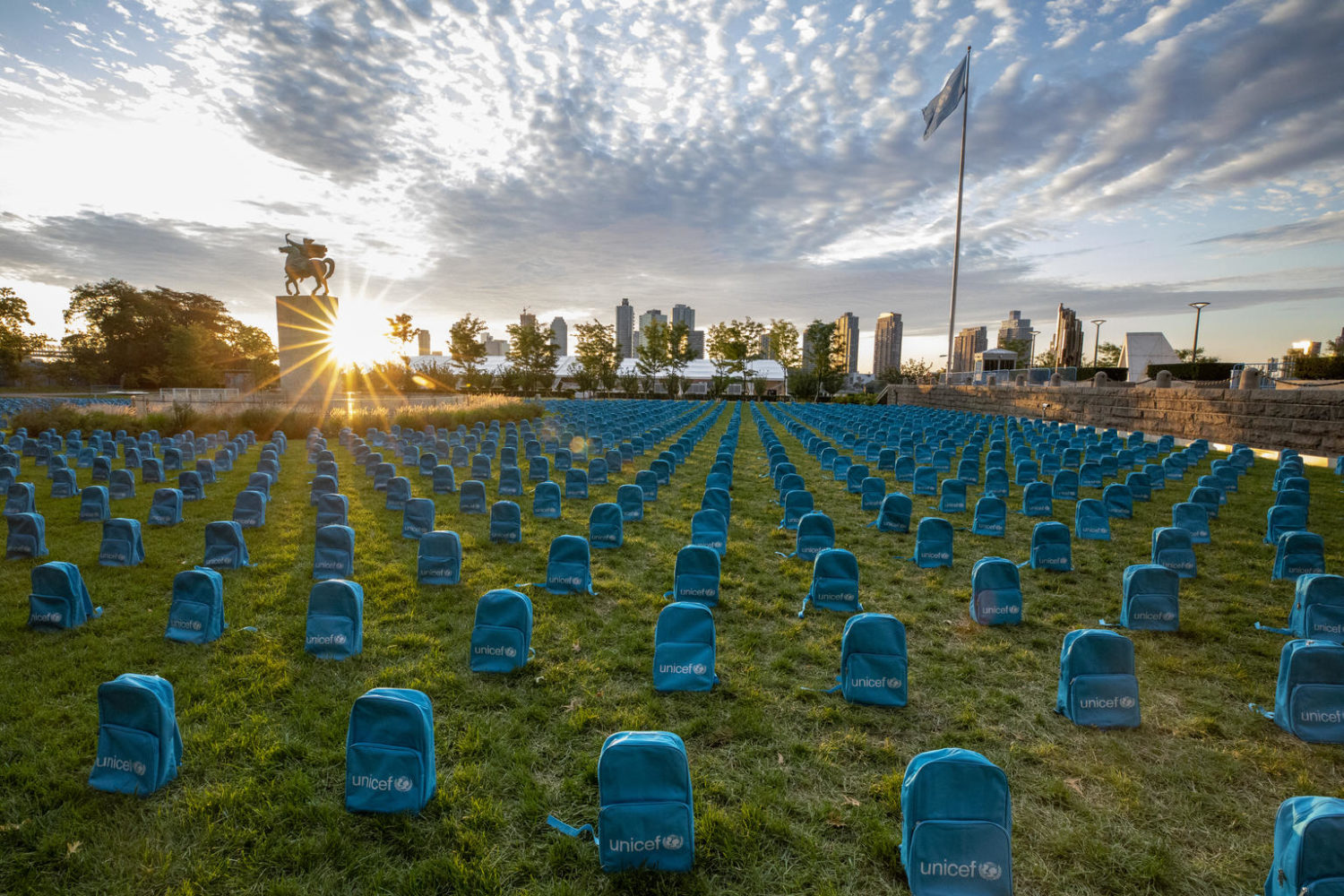Photos of the installation available here
8th September 2019 – A UNICEF installation to show the devastating scale of child deaths in conflict zones in 2018 was unveiled today at the United Nations in New York. The haunting display features 3,758 backpacks in rows reminiscent of a graveyard, each one representing a senseless loss of a young life to conflict.
The installation, which will run through 10 September, is a message to world leaders as children in many parts of the world are returning back to school, and just days ahead of the annual United Nations General Assembly. Once the installation is taken down, the backpacks will continue on their journey to support children’s education.
“UNICEF backpacks have always been a symbol of hope and childhood possibility,” said UNICEF Executive Director Henrietta Fore. “In just two weeks, world leaders gathering at the UN General Assembly will celebrate the 30th anniversary of the Convention on the Rights of the Child. This installation should remind them of the stakes.”
According to the 2019 Annual Report of the Secretary-General on children and armed conflict, more than 12,000 children were killed or maimed in conflict zones last year – the highest number since the United Nations started monitoring and reporting this grave violation. These are only verified incidents – the actual numbers are likely to be much higher. UNICEF estimates that in a quarter of these incidences, children lost their lives.
In ongoing conflicts in Afghanistan, the Central African Republic, Somalia, South Sudan, Syria, Yemen and many more, children pay the heaviest price of war. Continued, widespread use of explosive weapons such as airstrikes, landmines, mortars, improvised explosive devices, rocket attacks, cluster munitions, artillery shelling cause the vast majority of child casualties in armed conflict.
“As many children go back to school this week, we are drawing attention to the thousands of children killed in conflict zones and whose tragic loss will forever be felt in their homes, classrooms and communities around the world,” said Fore. “The remarkable gains made for children in the last 30 years clearly show what we can do if we harness the political will to put children first.”
-ENDS-
Notes to editors
Download photos and broadcast quality b-roll here.
For more information, please contact:
Unicef UK Media Team, 0207 375 6030, [email protected]
About Unicef
Unicef is the world’s leading organisation for children, promoting the rights and wellbeing of every child, in everything we do. Together with our partners, we work in 190 countries and territories to translate that commitment into practical action, focusing special effort on reaching the most vulnerable and excluded children, to the benefit of all children, everywhere.
Unicef UK raises funds to protect children in danger, transform their lives and build a safer world for tomorrow’s children. As a registered charity we raise funds through donations from individuals, organisations and companies and we lobby and campaign to keep children safe. Unicef UK also runs programmes in schools, hospitals and with local authorities in the UK.
For more information please visit www.unicef.org.uk


